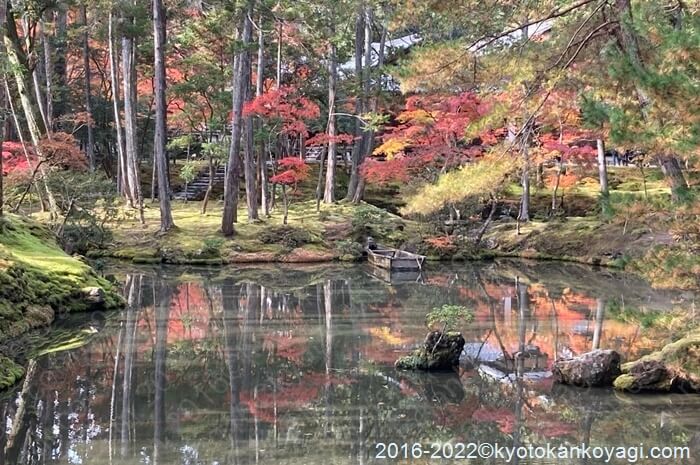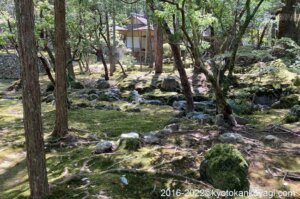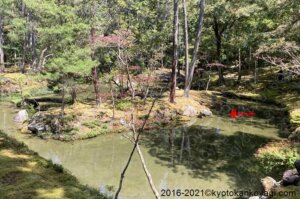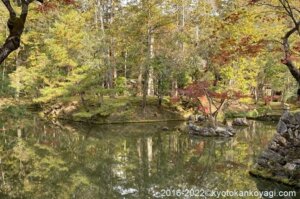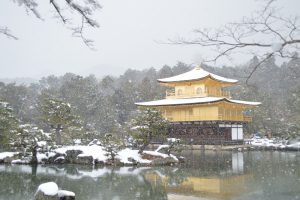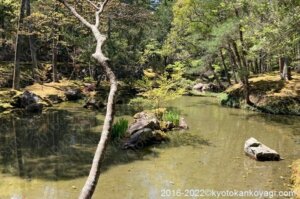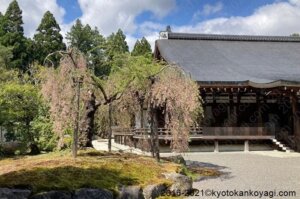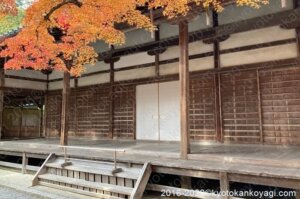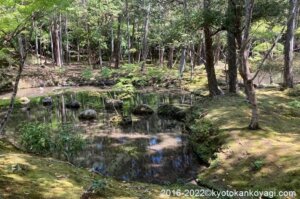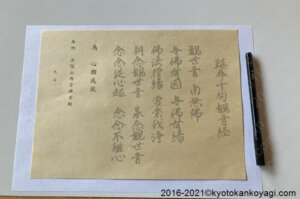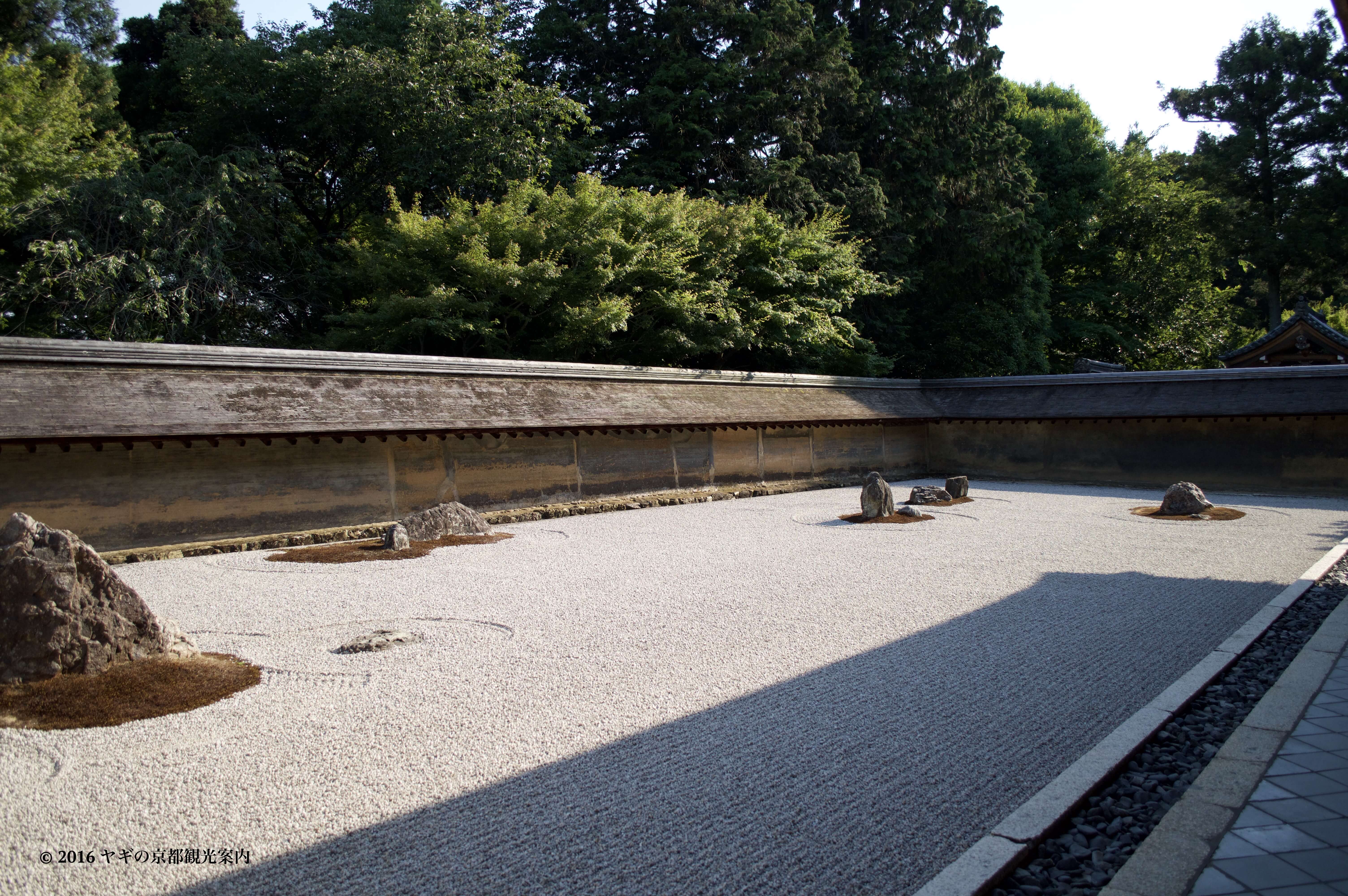THE GIST OF THIS ARTICLE
- This page: Short history of Saihoji and its gardens
- Page 2: Other must-sees, Kannon kyo sutra, and reservation to visit
The following is the contents of this article.
Eikoseki Rock 影向石
In the lower garden, you’ll find a rock tighten with a Shimenawa rope. At one night in the 14th century, Matsuo Myojin said in a monk’s dream, “I will descend to your place. But do not build any shrines there.” And he found the stone with a Shimenawa in the next moring. Every Oshogtsu (Jan. 1) the Shimenawa in the photo.
Sanzon Seki Rocks 三尊石
In the tip of Kasumigashima, there are three stones represent Buddhist Deities. From left to right: Seishi Bosatsu, Amida Bosatsu, and Kanzeon Bosatsu. The Sanzon Seki Rokcs in Kinkakuji and Ginkakuji was derived of them.
Sinsen Horai Shiso in the garden 神仙蓬莱思想
Overview
Shinsen Horai Shiso is an idea about immortality. It brought to Japan in around 6th century from China. Cranes and tortoises imply everlasting life. Many traditional Japanese gardens are designed under the influence of it and we can find crane islands and tortoise island.

More info. about Shinsen Horai Shiso in Japanese garden? Check the post on Rengeji temple.
Kame shima (Tortoise island) 亀島
The island in the photo stands for a tortoise. Tortoise is known as a symbol of long life.
Ashihara shima of Kinkakuji (the island in front of the golden pavilion) is an imitation of it.
Tsuru Shima (Crane island) 鶴島
The group of rocks in the left. It is another Sanzonseki rocks in Ogonchi.
(Ship stone) 船石
It stands for a ship heading for the Buddhist pure land.
Sairaido, the main hall 御本堂(西来堂)
The main hall of Saihoji enshrines Amida Nyorai. Before entering the garden, we wright Sutra.

刮目してくれ
Kannondo 観音堂
Kannondo is enshrines Kannon.
In the pond near Kannondo, we find small stones. Some says they are the debris of a bridge from Kannondo to Ruriden building. Ruriden is a model of Kinkakuji and Ginkakuji.
Sutra 写経(延命十句観音経)
We wright a Sutra (Enmei Jikku Kannonn Kyo) before entering the garden.
- 観世音(Kanzeon ) 南無佛(Namubutsu):I approve Kannon.
- 与佛有因(Yobutsuuin)与佛有因(Yobutsuyuuin):There is a bond between Kannon and me.
- 佛法僧縁(Buposoen)常楽我浄(Jyorakugajo):Buddha, teaching, and monks give me 常楽我浄(Jorakugajo).
- 朝念観世音(Chonen Kanzeon)暮念観世音(Bonen Kanzeon):In the morning, in the evening, I imagine Kannon in my heart.
- 念念従心起(Nenen Jushihki)念念不離心(Nenen Furishin): These are born in my heart and are always with me.
常楽我浄(Jyorakugajo)consists of four ideas.
- 常徳 (Jotoku):Knowing the fact that everything is to be changed, we are in calm.
- 楽徳 (Rakutoku):Knowing suffer, we are free from it.
- 我徳 (Gatoku):Be good to others.
- 浄徳 (Jotoku):Do no to be descriminative.
Reservation 申し込み方法
We cannot visit Saihoji without a reservation in advance. Check the official website.

Sorry, not in English.
Access to saihoji 西芳寺へのアクセス
JR京都駅から

At Kyoto sta. bus stop C6, take Kyoto bus No.73 (not Kyoto city bus).
Bus: Take Kyoto bus no. 63/73. Get off at Kokedera/Suzumushidera bus stop.
Train: Hankyu Masuo Taisha sta.

